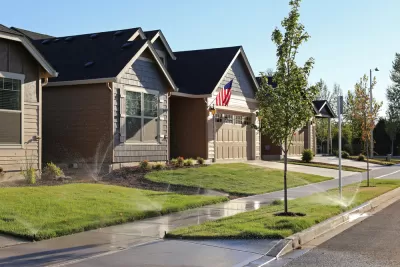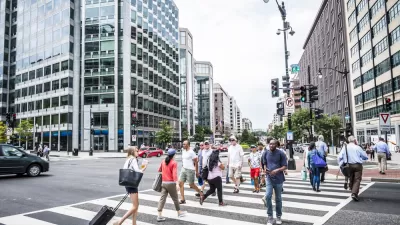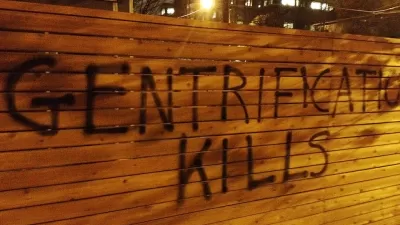Low-income residents have scattered to the periphery, where social services are less accessible.

Aaron Wiener writes in detail about the suburbanization of poverty, focusing on the region around Washington, D.C. as an example of changes underway in cities around the country.
According to Wiener, people growing up in neighborhoods in Washington, D.C. couldn't have imagine how much those places would change—or where those changes would require them to move.
Nobody imagined it, really. Certainly not the original suburbanites, the mostly white pilgrims who fled cities nationwide for peace, safety, space — and sometimes to get away from people who didn’t look like them. Not the federal government, which declared war on poverty in the 1960s but got stuck on an old version of the fight, still targeting low-income clusters in urban centers today rather than the diffusion of people who can no longer afford to live near their work. Not the nonprofit organizations that help low-income populations, which began in the so-called inner city and are largely still there, spending far more money per urban poor person than per suburbanite in need — 10 times as much in the D.C. region.
According to Wiener, low-income residents are leaving downtowns for more suburban locales, where they are "increasingly hidden from public view" and "isolated from the government offices, social services, and networks of friends and relatives on which they once relied." Traditionally wealthy areas, like Montgomery County in Maryland, have seen the fastest increases in poverty while also seeing an influx of non-white residents.
To illustrate the larger societal shift, Wiener follows the story of Delonte Wilkins, a resident of Capital Heights, Maryland, who grew up in the Bloomingdale neighborhood of Northwest Washington, D.C. But the larger story told by the article is about the struggle of non-profits and local jurisdictions to respond to the shifting geography of poverty.
FULL STORY: Poverty is moving to the suburbs. The war on poverty hasn’t followed.

Alabama: Trump Terminates Settlements for Black Communities Harmed By Raw Sewage
Trump deemed the landmark civil rights agreement “illegal DEI and environmental justice policy.”

Planetizen Federal Action Tracker
A weekly monitor of how Trump’s orders and actions are impacting planners and planning in America.

How Atlanta Built 7,000 Housing Units in 3 Years
The city’s comprehensive, neighborhood-focused housing strategy focuses on identifying properties and land that can be repurposed for housing and encouraging development in underserved neighborhoods.

In Both Crashes and Crime, Public Transportation is Far Safer than Driving
Contrary to popular assumptions, public transportation has far lower crash and crime rates than automobile travel. For safer communities, improve and encourage transit travel.

Report: Zoning Reforms Should Complement Nashville’s Ambitious Transit Plan
Without reform, restrictive zoning codes will limit the impact of the city’s planned transit expansion and could exclude some of the residents who depend on transit the most.

Judge Orders Release of Frozen IRA, IIJA Funding
The decision is a victory for environmental groups who charged that freezing funds for critical infrastructure and disaster response programs caused “real and irreparable harm” to communities.
Urban Design for Planners 1: Software Tools
This six-course series explores essential urban design concepts using open source software and equips planners with the tools they need to participate fully in the urban design process.
Planning for Universal Design
Learn the tools for implementing Universal Design in planning regulations.
Jessamine County Fiscal Court
Caltrans
Institute for Housing and Urban Development Studies (IHS)
City of Grandview
Harvard GSD Executive Education
Toledo-Lucas County Plan Commissions
Salt Lake City
NYU Wagner Graduate School of Public Service





























